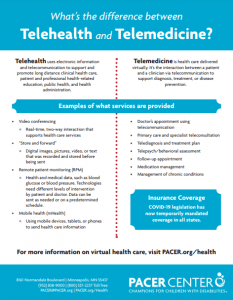The end of the COVID-19 public health emergency (PHE), currently scheduled for April 19, will affect the continuation — or expiration — of temporary Medicare flexibilities, including the expansion of telehealth. During the pandemic, Medicare beneficiaries have had access to a wide range of telehealth services, including telemental health, and uptake has increased substantially. Unfortunately, once the PHE ends, the authority for these flexibilities will no longer be in effect, meaning that many beneficiaries will lose access to services. Federal action to temporarily extend the current telehealth waivers would allow policymakers time to study whether they should make permanent changes regarding telemental health care coverage.
Medicare Coverage of Telemental Health
At the beginning of the pandemic, Congress temporarily authorized the Centers for Medicare and Medicaid Services (CMS) to waive all statutory requirements governing Medicare coverage of telehealth, including telemental health care, as a means of rapidly responding to the pandemic. CMS then implemented several telehealth flexibilities, including:
- allowing beneficiaries to receive telehealth services in all settings, including their homes
- increasing provider reimbursement for telehealth
- providing coverage for audio-only telehealth services
- increasing the range of services eligible for telehealth coverage
- expanding the type of providers who can furnish telehealth (including clinical psychologists, licensed clinical social workers, physical therapists, occupational therapists, and speech language pathologists)


